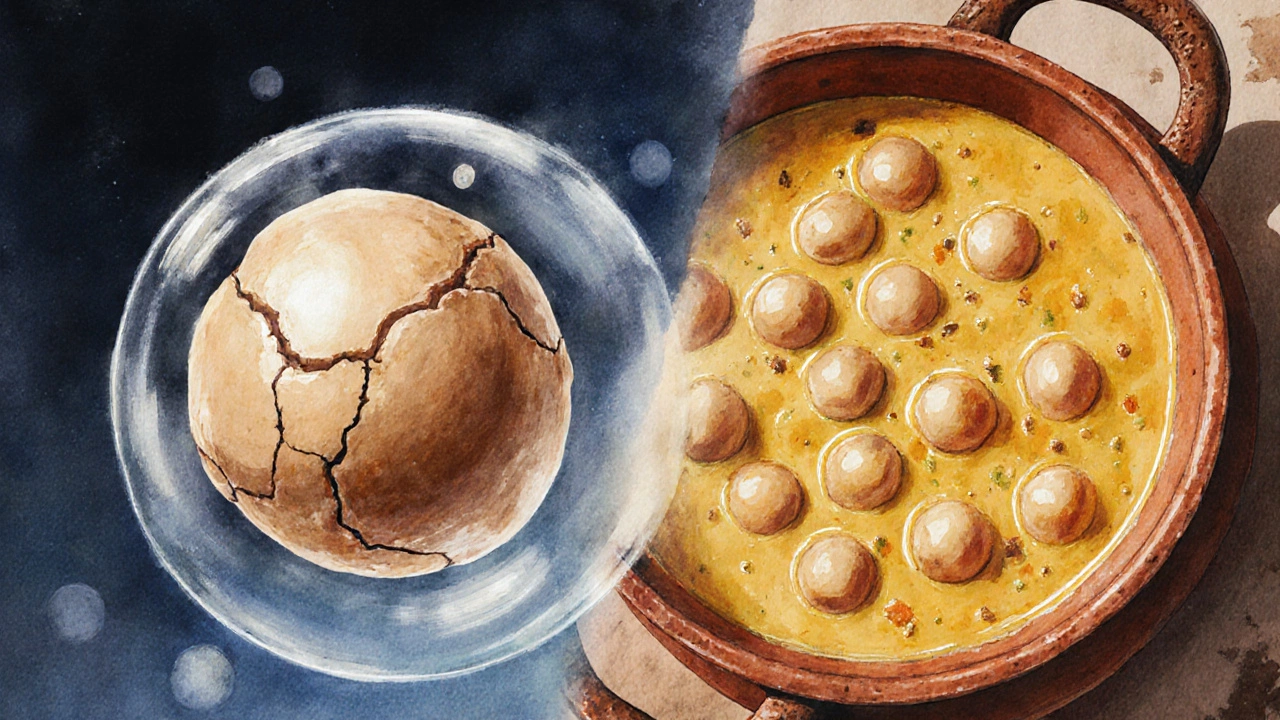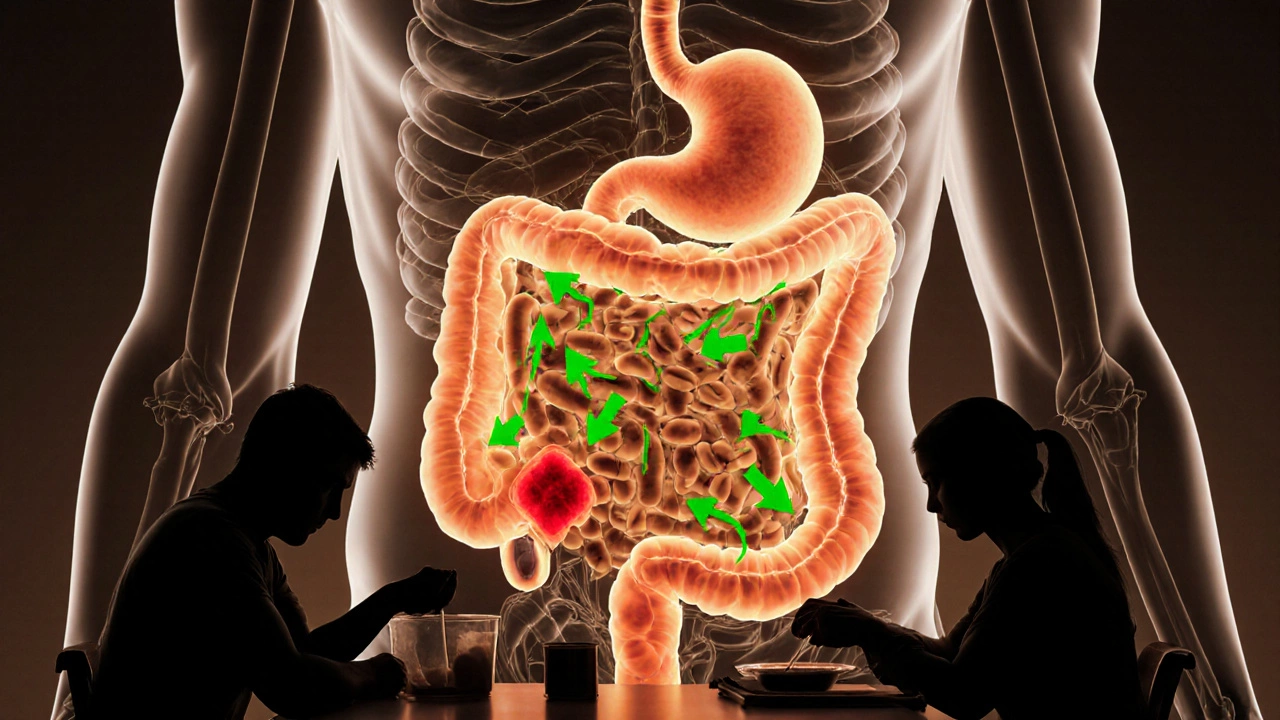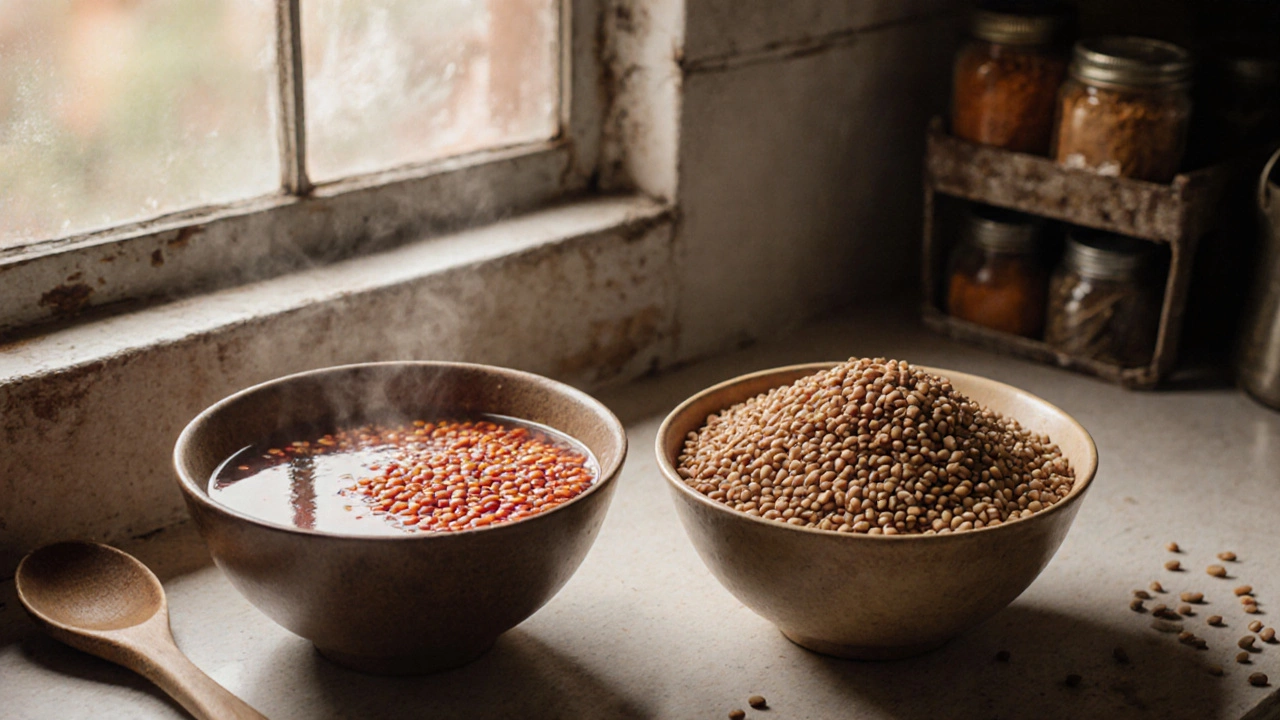Pulse Cooking Time Calculator
Calculate Unsoaked Cooking Time
Results
Without soaking, kidney beans can contain phytohaemagglutinin, a toxin that causes nausea and vomiting. Always soak and boil for 10 minutes before pressure cooking.
Ever tossed dry lentils or chickpeas straight into the pot without soaking them, hoping to save time? You’re not alone. Many home cooks skip this step, especially when making a quick dal recipe simple after a long day. But what actually happens when you skip soaking pulses? The answer isn’t just about longer cooking times-it affects texture, digestion, and even nutrient absorption.
They Take Way Longer to Cook
If you skip soaking, your pulses will need 45 to 90 minutes of simmering to become tender. That’s double-or even triple-the time of soaked ones. For example, red lentils (masoor dal) take about 20 minutes when soaked, but without soaking, they’ll cling to hardness for 50 minutes or more. Split chickpeas (chana dal) can take over an hour and still feel gritty. You’ll end up watching the pot, stirring constantly, hoping they soften before dinner’s ruined.
This isn’t just inconvenient-it wastes gas or electricity. A study from the Indian Institute of Food Processing Technology found that unsoaked pulses used 30% more energy to reach doneness compared to soaked ones. That’s not just about time; it’s about cost and carbon footprint.
The Texture Suffers
Soaking rehydrates pulses evenly. Without it, the outer skin swells slowly while the inside stays dense. The result? Mushy skins with hard centers. You bite into a dal that feels like it’s got pebbles inside. It’s unpleasant, especially in a dish meant to be creamy and comforting.
Try this: make two batches of yellow dal-one soaked overnight, one not. Taste them side by side. The soaked one melts softly on your tongue. The unsoaked one crunches. That crunch isn’t texture; it’s undercooking.
Your Digestive System Pays the Price
Pulses contain oligosaccharides-complex sugars your body can’t break down. These pass into your gut, where bacteria ferment them, causing bloating, gas, and discomfort. Soaking helps wash away a big chunk of these sugars. It also activates enzymes that start breaking down anti-nutrients like phytic acid.
Phytic acid binds to minerals like iron, zinc, and magnesium, making them harder for your body to absorb. Soaking for 8-12 hours reduces phytic acid by up to 50%, according to research from the Journal of Agricultural and Food Chemistry. Skip soaking, and you’re not just eating beans-you’re eating mineral blockers.
People with sensitive stomachs, IBS, or digestive issues notice this difference immediately. One woman in Sydney told me she stopped getting bloated after she started soaking her moong dal-even though she ate the same amount. She didn’t change anything else.

You Might Need More Salt or Spices
Unsoaked pulses absorb water slowly, so they also absorb seasoning unevenly. You might add salt or turmeric at the start, thinking it’ll flavor the dal, but the hard centers won’t let the spices penetrate. By the time the outside tastes right, the inside is bland. You end up adding more salt later, which can make the whole dish too salty.
Soaked pulses soak up flavors like sponges. They’re ready to absorb the garlic, cumin, and curry leaves you add at the end. The result? A layered, balanced taste. Without soaking, your dal tastes flat.
There Are Exceptions
Not all pulses need soaking. Red lentils (masoor dal) and split yellow peas (chana dal) cook fast even unsoaked-they’re already split, so water gets in easily. But whole black lentils (urad dal), whole chickpeas (kala chana), and kidney beans (rajma)? Always soak them.
And if you’re in a hurry? Use the quick-soak method: boil pulses for 2 minutes, turn off the heat, cover, and let sit for an hour. It’s not overnight, but it cuts cooking time by half and reduces gas-causing sugars.
What About Pressure Cookers?
Some people think pressure cookers make soaking unnecessary. They’re wrong. Pressure cookers speed up cooking, but they don’t fix texture or digestion issues. Unsoaked kidney beans in a pressure cooker can still be hard inside, and the anti-nutrients? Still there. In fact, undercooked kidney beans can be dangerous-they contain phytohaemagglutinin, a toxin that causes nausea and vomiting. Soaking and boiling for at least 10 minutes before pressure cooking destroys it.
Even with a pressure cooker, soak your beans. It’s not a suggestion-it’s safety.

Simple Soaking Routine for Busy Cooks
You don’t need to plan a week ahead. Here’s how to make soaking easy:
- At night, rinse 1 cup of pulses in cold water.
- Place them in a bowl with 3 cups of water (they’ll expand).
- Cover with a plate or lid.
- Leave on the counter (no fridge needed for 8-12 hours).
- Drain and rinse before cooking.
Do this while you’re brushing your teeth or making tea. It takes 30 seconds. The payoff? Faster cooking, better flavor, less bloating, and more nutrients absorbed.
What to Do If You Forgot to Soak
Oops. You’re standing at the stove with dry lentils and no time. Here’s your rescue plan:
- Use a pressure cooker-it’ll soften them faster than boiling.
- Add a pinch of baking soda (1/8 tsp per cup of pulses). It helps break down the skins, but use it sparingly-it can make the dal mushy if overdone.
- Keep the lid slightly open at first. This lets gas escape and prevents foaming.
- Don’t add salt or acidic ingredients (tomatoes, lemon) until the end. They toughen the skins if added early.
It’s not ideal, but it’s better than eating crunchy dal.
Bottom Line: Soak. It’s Worth It.
Skipping soaking feels like a shortcut, but it’s a false economy. You save minutes at the start, but lose hours at the stove, compromise flavor, and put strain on your digestion. Soaking pulses is one of the simplest, cheapest, and most effective upgrades you can make to your dal recipe simple routine.
It’s not about tradition. It’s about science. And taste. And comfort. Your body will thank you-and so will your kitchen.
Do all pulses need soaking?
Not all. Split lentils like masoor dal and chana dal cook quickly without soaking because their skins are already removed. But whole pulses like kidney beans, chickpeas, black lentils, and navy beans should always be soaked. Soaking reduces cooking time, improves texture, and makes them easier to digest.
Can I soak pulses in hot water?
Yes, and it’s faster. The quick-soak method works well: bring pulses and water to a boil, let them boil for 2 minutes, then turn off the heat and let them sit covered for 1 hour. This cuts soaking time and helps reduce gas-causing sugars. Just drain and rinse before cooking.
Does soaking remove nutrients?
No-it actually helps preserve them. Soaking reduces phytic acid, which blocks mineral absorption. When you soak and rinse, you’re removing the compound that stops your body from using iron, zinc, and magnesium. You’re not losing nutrients-you’re making them more available.
Why does my dal still feel gritty after cooking?
Grittiness usually means the pulses weren’t soaked or weren’t cooked long enough. Unsoaked pulses swell unevenly, leaving hard centers. Even in a pressure cooker, if you skip soaking, you might get that texture. Always soak whole pulses, and cook until they mash easily between your fingers.
Is it safe to eat unsoaked kidney beans?
No. Raw or undercooked kidney beans contain phytohaemagglutinin, a toxin that can cause severe nausea, vomiting, and diarrhea. Soaking and boiling for at least 10 minutes before using them in a pressure cooker or slow cooker destroys this toxin. Never skip this step with kidney beans.
Can I soak pulses in the fridge?
Yes, if you’re soaking for longer than 12 hours. Room temperature is fine for 8-12 hours, but if you’re soaking overnight and it’s very warm, or you’re soaking for more than a day, keep them in the fridge to prevent fermentation or bacterial growth.
